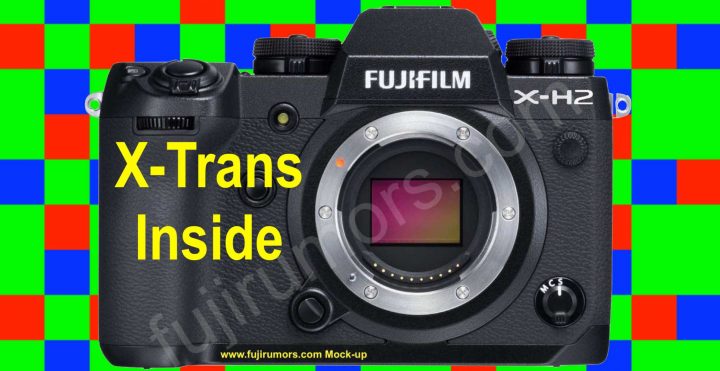Fujifilm X-H2 Coming with New X-Trans Sensor: My Thoughts and Your Vote!

Thanks to our sources, we know it: the Fujifilm X-H2 will feature a new X-Trans sensor!
What we also know, is that the Fujifilm X-H2 will be Fujifilm’s first camera to feature a new sensor and processor.
- Fujifilm X-H2 coming 2022
- Fujifilm X-H2 will shoot 8K DCI/UHD
- Fujifilm X-H2 will cost less than $2,500
- Fujifilm X-H2 will be first X series camera to use new sensor and processor
So here is quickly what I think about it.
Now, both color filter arrays have their strengths and weaknesses. We have written about it more in detail here. In short we could sum it up like this:
- Bayer Array: better for more features
- X-Trans Array: better for image quality
Again, this is a brutal simplification. If you want to understand it better, definitely read this article.
My Thoughts
Mixed feelings.
I mean, I am totally happy that Fujifilm sticks with the X-Trans sensor.
A little dynamic range boost, a bit more sharpness, less moire, more film-like grain and less color noise at high ISO and so forth.
If we look only at image quality, then APS-C X-Trans is the way to go.
However, it is also true that the X-Trans strengths are not as easy to market as the Bayer strengths.
For example, a Bayer sensor costs less. So you could make the Fujifilm X-H2 even more affordable than it already is for an 8K camera. You’d lose in terms of image output, but will customers really dig that deep into the details of the X-Trans sensor to value its strengths?
I doubt.
Pixel shift is another great example.
It’s a feature that has a very limited pratical use. If anything in your frame moves minimally, or even just the light changes during the multiple exposures, you’ll get motion blur and/or aritfacts in your image.
And yet it is such a nice feature to put on paper and to brag with, even if 99,99% of people won’t ever find a practical use for it.
But from a mere marketing point of view, a camera with pixel shift is just easier to market.
I mean, what is more eye-catching to hear for most customers: “look, your camera can shoot at 200mp” or “look, your camera has higher color fidelity at high ISO“.
Pixel shift just sounds more exciting on paper than a feature where you ask poeple to pixel peep and compare performances.
So here is the thing:
If Fujifilm won’t figure out how to make certain features work on X-Trans (pixel shift, RAW-video, etc) and to work around the limitations given by the 20-30% more power hungry X-Trans sensor and more complex color fiter array, then they will face the same old problem: they have a best APS-C image quality, but people won’t really understand that and just look for headline grabbing features on other cameras.
That’s why I have mixed feelings.
And yet, at the end, in the choice between features and image quality, Fujifilm went for image quality. And I am happy about it.
According to a survey we have launched here, most of you applaud this decision, too. But if the market will also reward this choice remains to see.
We will find it out in 2022.
The Fastest Growing Fujifilm Group
- Fujifilm Film Simulation Group (100% Fuji Colors Power)
Follow FujiRumors on Patreon, Facebook, Instagram, RSS-feed, Youtube, Flipboard and Twitter
Join Our Owners Groups
- Fujifilm GFX User Group
- Fujifilm X-T User Group
- Fujifilm X-S User Group
- Fujifilm X-H User Group
- Fujifilm X-E User Group
- Fujifilm X-Pro User Group
- Fujifilm X100 line Group
Join Our Facebook Pages

